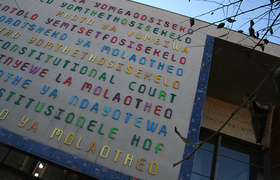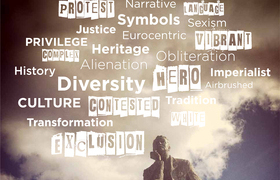The politics of aesthetics
13 April 2015Prof Jaco Barnard–Naude
Department of Private Law
"Many have expressed dissatisfaction about the focus of the student protests on aesthetics: the Rhodes statue. They fear that transformation will fall by the wayside of the revolutionary zeal with which the students are protesting for the removal of the statue. But Jacques Rancière tells us that politics is constitutively an aesthetic activity in that it is an activity that always already involves the conditions of sensuous perception. Politics determines a 'distribution of the sensible': what and who may be seen, heard and felt. As an emancipatory activity, politics consist in making visible that which was not visible, 'audible as speaking beings those who were previously heard only as noisy animals'.
"Politics occurs when the logic of an established order is confronted with the logic of disagreement, which represents a fundamental discord that arises when an emancipatory political subject polemically contests her subordinated position and perceived invisibility in a given distribution of the sensible by asserting that this subordination/exclusion amounts to a wrong that can only be addressed through a reconfiguration of the distribution of the sensible.
"The logic of disagreement that has arisen out of the student protests resides in a fundamental frustration with the slow pace of transformation. This is a disagreement with the continuing public exhibition of symbols of oppression, with the lack of representation in the academic staff and perhaps most importantly, with forms and processes of thought and ways of doing that underlie all these phenomena.
"An optimistic reading of the events surrounding the #RhodesMustFall campaign suggests that authentic democratic politics in South Africa is still possible – for this the students deserve our gratitude. A more tentative reading cannot but insist that the work that remains to be done always begins on the day that the statues of the old order collapse."
|
|
 This work is licensed under a Creative Commons Attribution-NoDerivatives 4.0 International License.
This work is licensed under a Creative Commons Attribution-NoDerivatives 4.0 International License.
Please view the republishing articles page for more information.










